Soviet personal computers
Hello, Habr!
My first computer was quite powerful - an AMD Athlon 64X processor, 512 megabytes of RAM, a GeForce graphics card. And I never touched computers of the times of the USSR, and I was very surprised when I found out how many there were. In this post, I collected personal computers designed and manufactured in the countries of the socialist bloc in the 1980-1990s.
Did you have computers from the following? Please tell us about your experience!
Please do not be too strict on the design of the post: some of the images I could not find in the best quality.
If you have something to add to the collection, please write about it in the comments or in private messages.
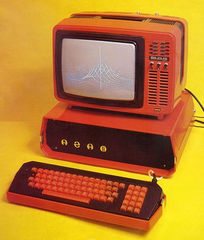
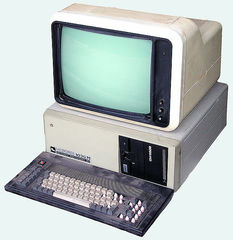
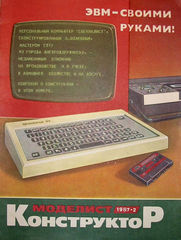
The Pravets computer line was produced from 1980 to 1988. This, for example, Pravets 8 - a clone of Apple II.
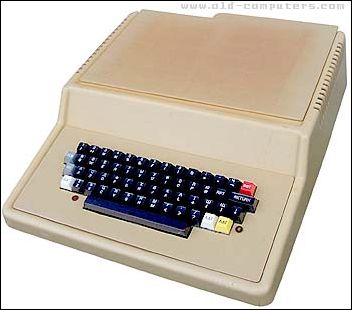
Also in the Pravets line was an IBM PC clone, made on the basis of Intel processors 8088 and 8086.
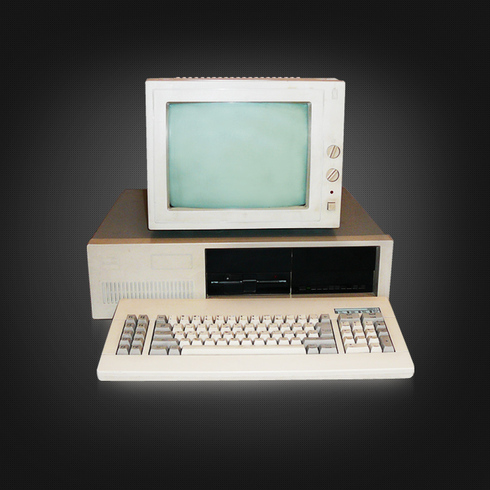
Pravets 8D was an analogue of Oric Atmos and was produced from 1985 to 1992.
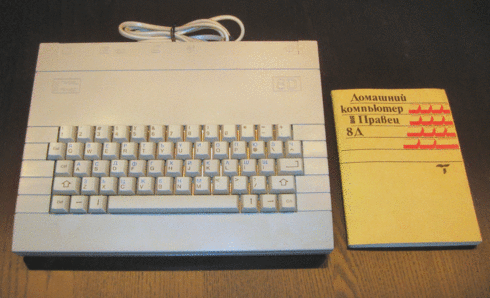
One of the first Soviet home computers was the Micro-80. To assemble it, it was necessary to use the instructions from the series of articles in the journal "Radio" in 1982-1983. The computer is based on the microprocessor KR580VM80, an analog of i8080 from Intel. In the photo - one of the developers of the Micro-80 computer Sergey Popov.
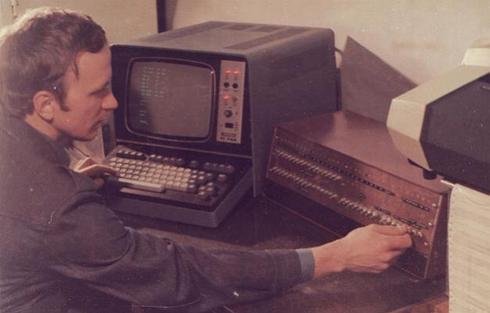
By 1990, 200,000 DVK computers of all models were produced - and there were nine of them. The abbreviation means "Dialogue computing complex." The first model came off the assembly line in 1982.

Agate was developed in 1981-1983, began to be produced in 1984, and only in 1993 was removed from the assembly line. It was an analogue of Apple II, created specifically for the needs of education. Vicki suggested that Agate was used in education right up to 2001. The computer was manufactured on a 6502 processor from MOS Technology. By the way, two game consoles were bundled with the Agates.
There were several agates. This is the first model - Agat-4.
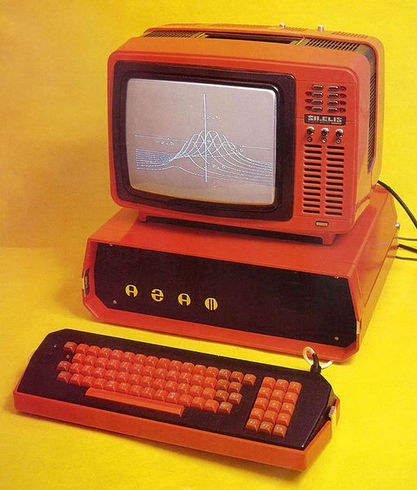
This is - Agat-7.
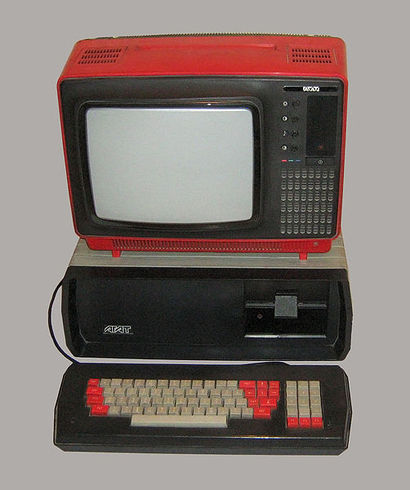 \
\
Agate 9.
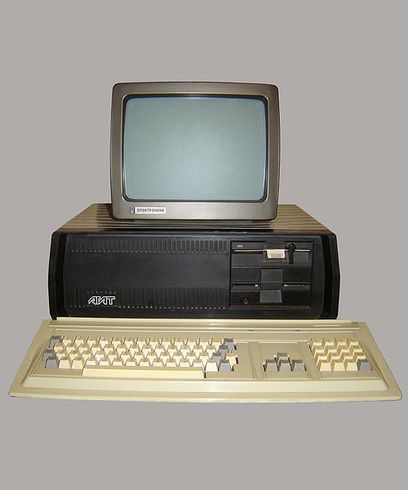
Game consoles:
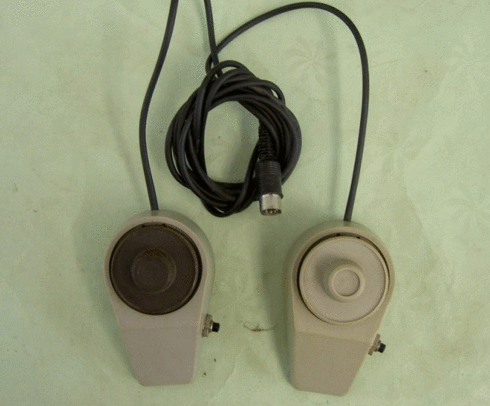
Fast forward to the German Democratic Republic. In 1984, they started production of the Robotron 1715 computer. They used an 8-bit U880 processor, a Zilog Z80 clone. There was no sound from the computer, the mouse port was also missing. But there were two built-in 5¼-inch drives.

"Specialist" has become a computer that spawned a number of clones. It could be programmed in Assembler, Fort, Pascal, C, BASIC. The computer was developed in 1985.
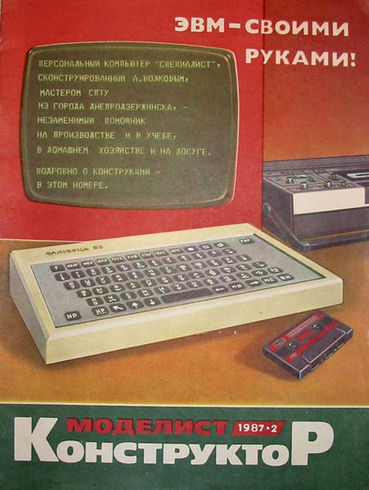
PC Lik is a computer clone. Specialist. LIK means "PERSONAL COMPUTER". The price, depending on the configuration, ranged from 398 to 543 rubles.
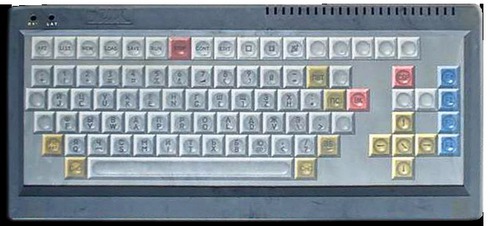
Neuron I9.66 was developed in Kiev, probably in 1985, it is supposedly the first IBM PC / XT-compatible personal computer. They made it on the basis of a processor with a clock frequency of 4.77 MHz. Neurons even sold in 1993.
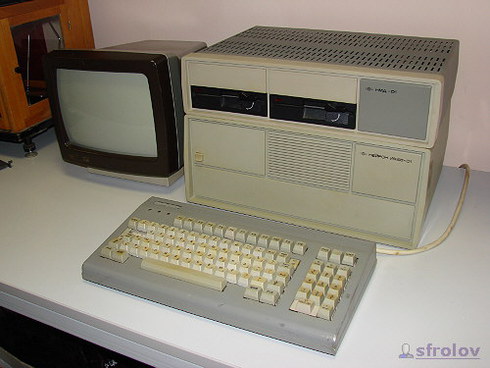
In Smolensk released "Assistant 128". It was an IBM-compatible computer. It was assembled on the basis of an Intel 8086 clone processor - KR1810VM86. I could not find the year the release began - tell me in the comments, please, if in the know.

1986 ES-1841 16-bit computer. The Unified System computers were mainly IBM PC clones developed in Minsk. The

16-bit Search personal computer was a partial IBM PC / XT clone. In 1988, the first batch was released.
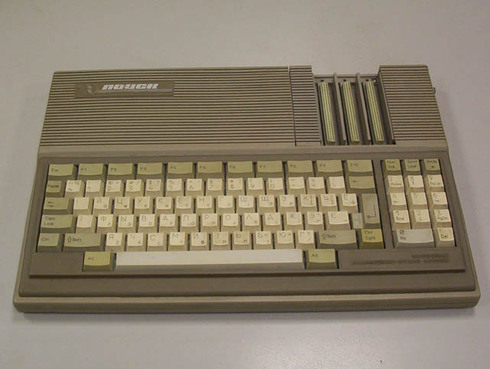
The Spark 1030 computer began to be produced in 1989 in several versions. 256 KB RAM could be expanded up to 1 MB. In the second and third versions of the computer began to use hard drives - 10 megabytes each.

Electronics MS 1502 was another analogue of the IBM PC XT.

Quasar-86 began to be released in 1992. This is a 16-bit home analogue of the IBM PC / XT-compatible PC based on the Intel 8086 clone processor.

BC means Home Computer. This is a family of 16-split computers, compatible by command system with SM computers, PDP-11 and DVK. The first models were produced since 1985. As storage devices was a compact cassette and drive. The model range included BK-0010, BK-0010-01, BK-0011 and BK-0011M.
BK-0010: BK for the horns!
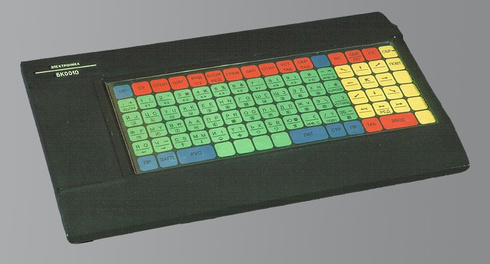
The home computer BK0010-01 in 1989 cost 750 rubles.
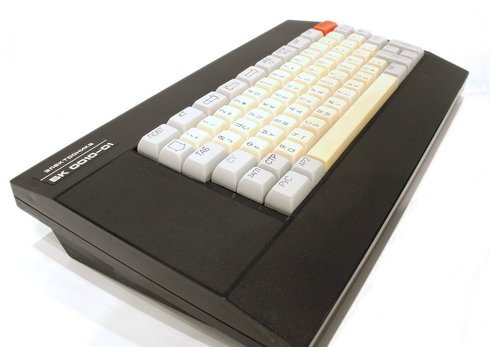
The 1986 Radio 86RK computer was designed for radio amateur assembly. This is a legendary development, followed by many clones.
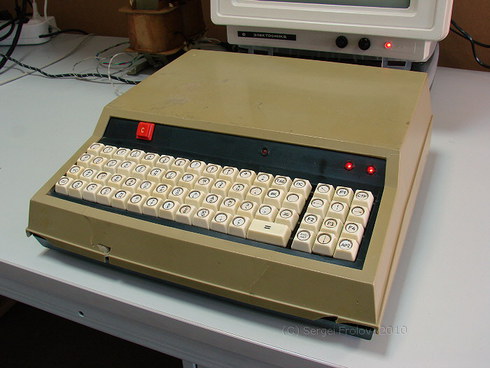
Printed circuit board for assembling Radio 86RK.

Among the clones of Radio 86RK: Alpha BK, Mikrosh, Electronics KR-01/02/03/04, Partner 01.01, Krista, Apogee BK-01, Spektr-001. Mikrosh's
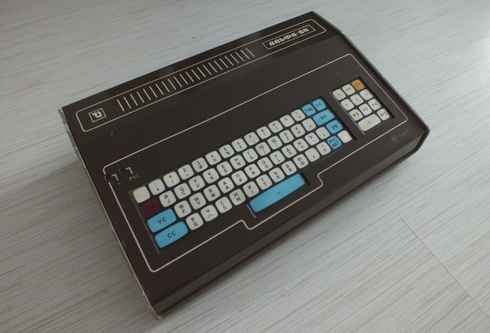

computer has been manufactured at the Electromechanical Plant since 1987. They even printed leaflets with information about him . Krista's computer was partially compatible with Radio 86RK. He worked on the processor KR580VM80A. It has been sold since 1986 at a price of 510 rubles.
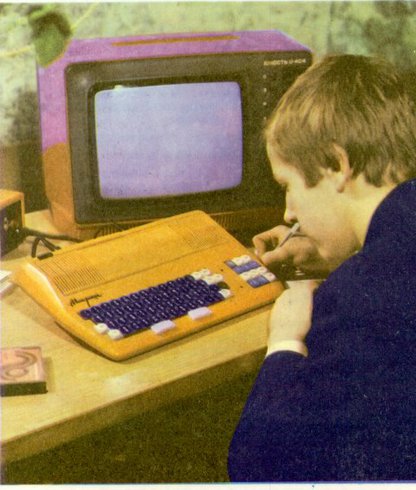
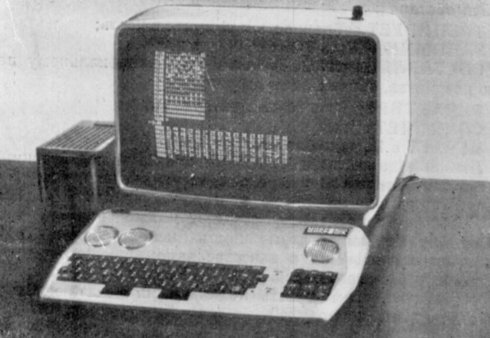
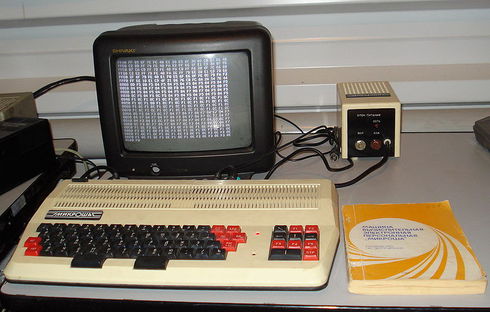
Included with this computer was a cassette with software: games, a BASIC interpreter, a text editor, training lessons in BASIC, and an English-Russian dictionary. It is worth noting that on Krist it was possible to work with a light pen - it can be clearly seen in the photo.
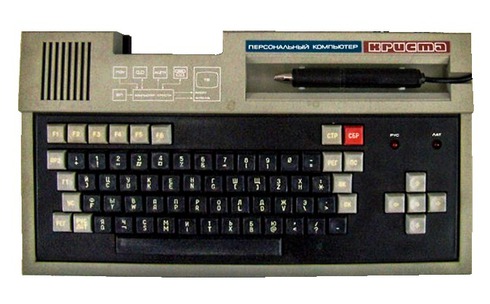
The Apogee BK-01 computer was developed on the basis of Radio 86RK and has been produced since 1988. They used a compact cassette or floppy disk to store data in it. You could buy it for 440 rubles. He, but with an upgrade to RAM, cost 560 rubles.

In the next model - Apogee BK-01Ts - color support appeared.


Partner 01.01, software compatible Radio 86RK, produced in Ryazan since 1987. It was built on the basis of the KR580VM80A processor, equipped with 64 KB of RAM and 16 KB of ROM. The computer worked in text mode with a resolution of 25 lines of 64 characters and two colors, which were later increased to eight.
Various modules could be connected to the computer, including a color pseudographic module and a drive controller module.
In 1990, this miracle of technology cost from 600 to 750 rubles.
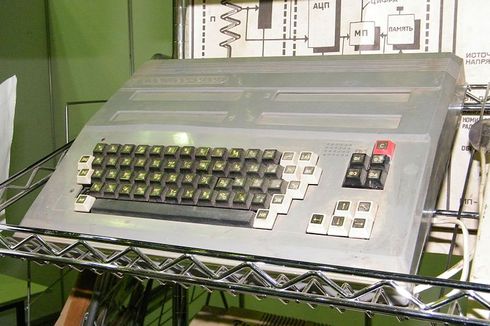
Electronics KR-01/02/03/04 - a series of computers for self-assembly. The abbreviation KR in the name means "radio amateur computer." The designer was made at three factories. Cost - 395 rubles, he was one of the cheapest 86RK clones manufactured industrially.

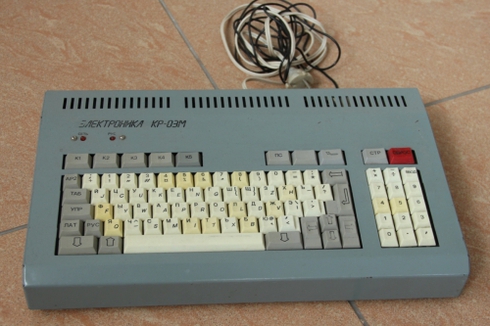

Spectrum-001 - a clone of Radio 86RK - has been released since the early 1990s. It was fully compatible with the original. The price for 1990 is 475 rubles.
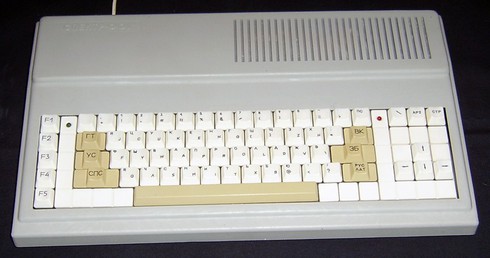
Vector-06Ц was developed in Chisinau in the late 1980s. From the unusual - it had a three-voice synthesizer. The computer in 1987 received a silver medal at the 33rd All-Union Radio Exhibition at VDNH.

Subsequently, several computer modifications were made: Vector-06Ц.02, Vector Start-1200, Krista-2, PK-6128TS, as well as the private development of Vector Turbo +.
Vector start up 1200.
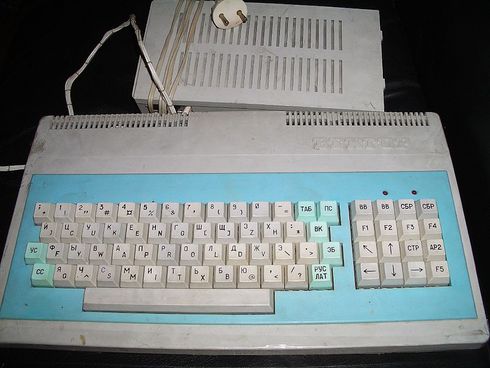
The prototype of the PC 8000 series was MSX standard computers.
The first computer in the series was Sura - in 1987. It was designed and manufactured in Penza at the VEM plant. There were several modifications, the ability to connect a drive, printer, kirtridge with startup and hard drives.
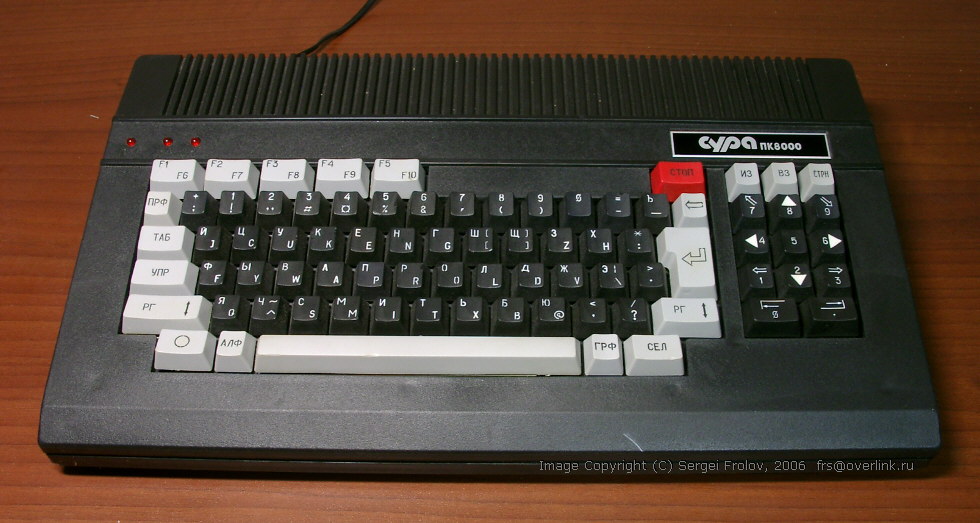
Vesta is one of the varieties of PK8000. The computer worked in two text and graphic modes, the processor KR580VM80A 1.78 MHz. The single-bit sound source was a piezo emitter. The set included instructions, a manual for BASIC and application programs, as well as an adapter for a TV receiver, cables for connecting to a cassette recorder and a TV. And, of course, the MK60 cassette with game and application programs in BASIC, including the games “UDAV”, “TENNIS”, “ATAKA”, “BANKIR” and others.
In addition, it was possible to buy a printing device and a sound generator.

Roby's computer is an analogue of the Hobbit, which, in turn, was developed on the ZX Spectrum architecture while maintaining software compatibility with the original. Developed in the USSR in the late 1980s (possibly in 1989).
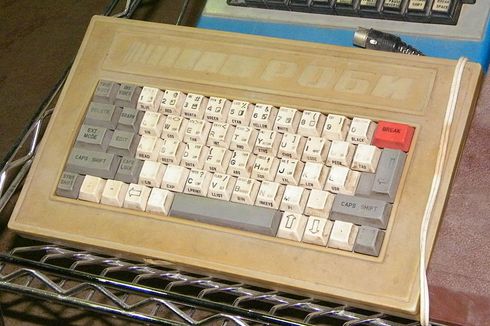
In the late 1980s, a “Byte” personal computer (modifications of “Byte” and “Byte-01”) was assembled in Brest - an 8-bit home computer, a clone of the ZX Spectrum computer. In Belarus in December 1990, Byte cost 960 Soviet rubles.
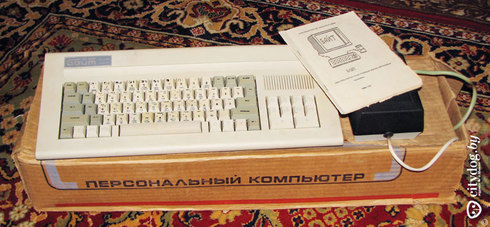
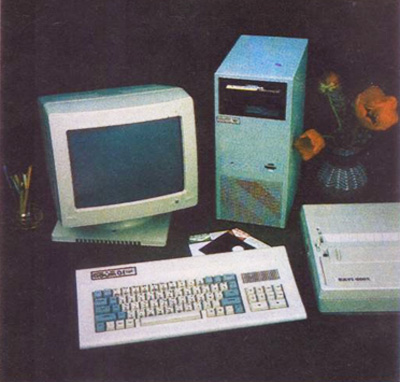
The Byte computer manufactured by the Dniester plant. The

Pentagon of 1989 is a ZX Spectrum clone for self-assembly.

"Delta-S" was produced since 1989. This computer is a ZX Spectrum + clone close in logic structure.
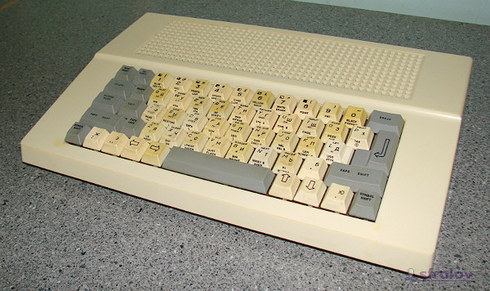
Gaming computer "Symbol" - another clone of many beloved ZX Spectrum. It was produced from 1990 to 1995 in Penza.

In Minsk they did at the NGO named after Since 1990, Lenin produced the ZX Spectrum 48K clone - Santaka-002 based on the original Zilog processor (Z840004PSC). Almost the same machine, but with a Secam encoder, was produced in Krasnodar under the name Impulse-M.
As ROM (16 KB), eight KS573RF2 or KR573RF5 microchips of 2 KB each were used.
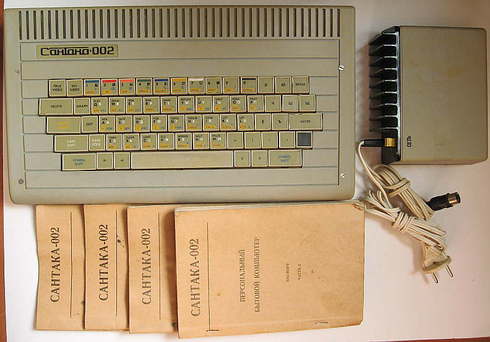
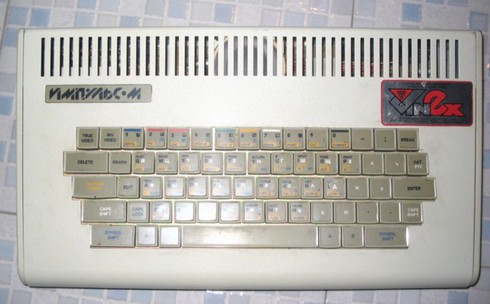
The "training and game console" Raton 9003 was also a clone of the ZX Spectrum. It was produced in Belarus based on the Z80 processor since 1993.
The kit included a campston joystick and software cassette.
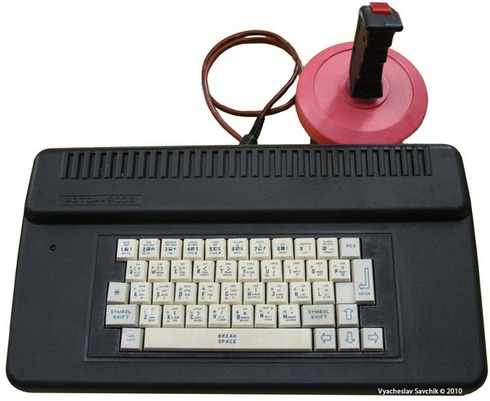
Nathanu, a clone of the ZX Spectrum 48K, could be carried in a briefcase with a computer case, power supply and joystick. They sold it in 1990 at a price of 650 rubles.
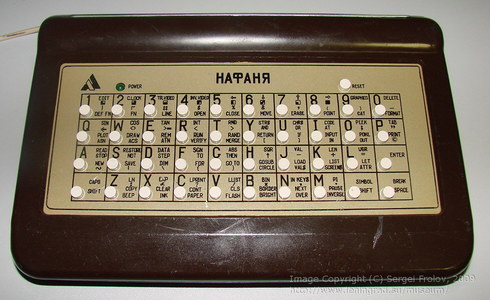
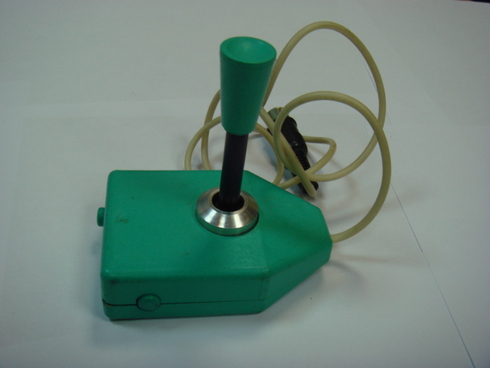
Meet this - Irisha. Using such an 8-bit computer, they were going to teach children computer science in schools. As a monitor used a TV - black and white or color. The computer is built on the basis of the same processor KR580VM80A, which was used during the assembly of the Micro-80. The clock frequency is 1.777 MHz.
The first Irish were introduced in the Moldavian SSR in 1985. This computer did not go into mass production.

The Lviv PK-01 8-bit educational-household microcomputer on the i8088 processor clone with a frequency of 2.22 MHz was produced from 1986 to 1991. It cost 750 rubles. In total, they released about 80 thousand copies.

The Ocean-240 personal computer was produced by the Institute of Oceanology of the USSR Academy of Sciences since 1986 and was intended for use on expeditions. Equipped with 128 KB RAM. As an external memory source - a household cassette recorder.
Used it together with a deep-sea probe as an information computer complex.
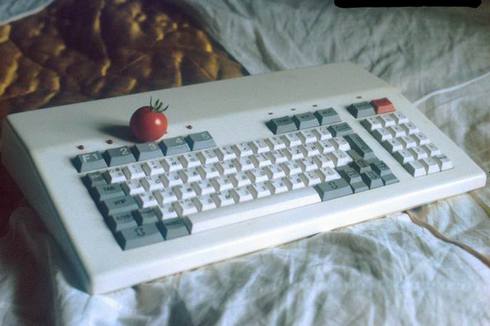
The Paldin 601 was assembled in 1987 in Bulgaria on the basis of the 8-bit CM601 processor, an analog of the Motorola MC6800. Poldin 601 had as many as four video modes 0..3 and a SECAM encoder. The following models added light pen input and a printer port.
Documentation, circuit diagram of the computer and additional boards, photos, articles and other materials about Poldin.
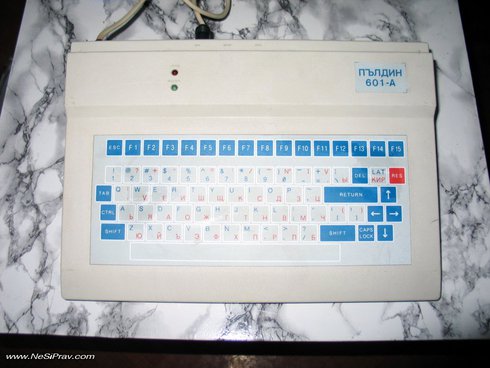
Electronics MS 0511, or UKNTS, was intended for training. It was first introduced in 1987. Also based on it were built process control systems, telegraph concentrators, accounting systems, ticket sales systems and so on.
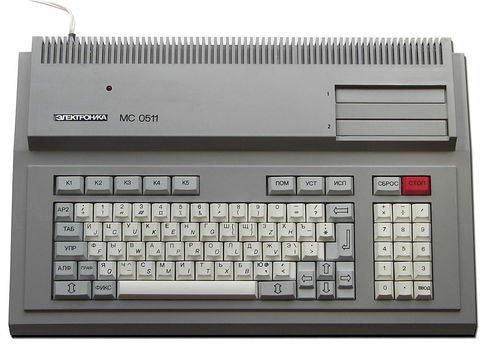
Corvette PK8010 / PK8020 has been mass-produced since 1988. These computers could be connected to a local network of up to 16 machines.

The UT-88 microcomputer consisted of a power supply unit, a central processor unit, a small memory unit, and an interface unit.
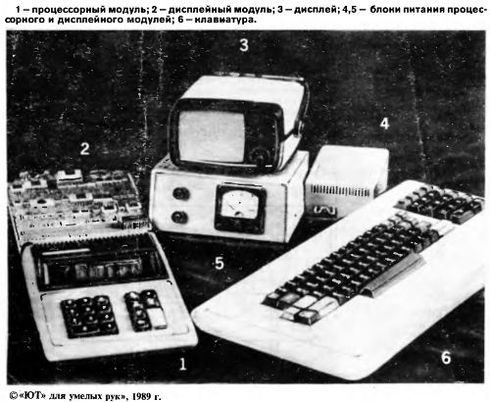
This is also a UT-88, but in a minimal configuration.
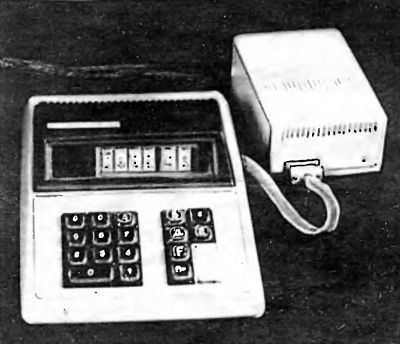
Bashkiria-2M was developed in 1989. It had 128 KB of RAM, including 24 KB of video memory - this made it possible to store two pages of 12 KB. Connected to a regular TV or monitor "Electronics MS 3201".

8 bitOrion-128 received the first prize in 1989 at the All-Union Exhibition of Radio Amateurs. The KP580VM80A processor worked at a frequency of 2.5 MHz, RAM 128 KB could be expanded to 256 KB. He worked in graphical mode, connected it to a TV.
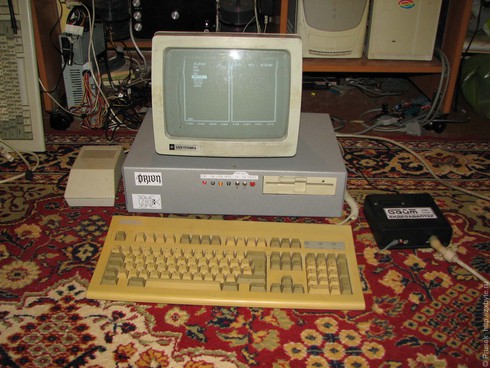
Since 1989, a computer Nemiga was produced in Minsk. This 16-bit PC was delivered to educational institutions as part of computer systems. The computer processor was capable of 500,000 register-to-register operations per second, and the video controller generated a 512 × 312 bitmap image, 32 KB of video memory. RAM - 128 KB. There was also a LAN controller.
In the photo - Nemiga PC 588, a desktop computer for the teacher.
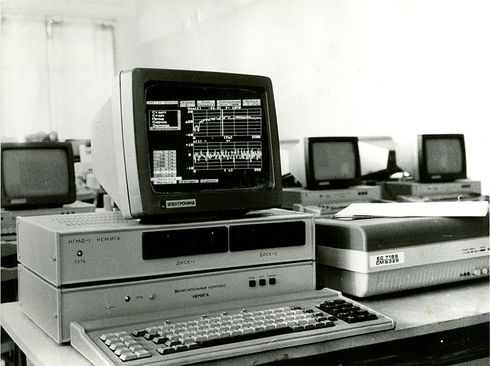
In 1990, on the basis of the same favorite in the USSR processor KR580VM80A, the Iskra 1080 Tartu computer was produced. He could boast 64 Kb of RAM and 20 Kb of ROM, as well as video modes with a resolution of 384x256 (4 colors) and 768x256 (2 colors).
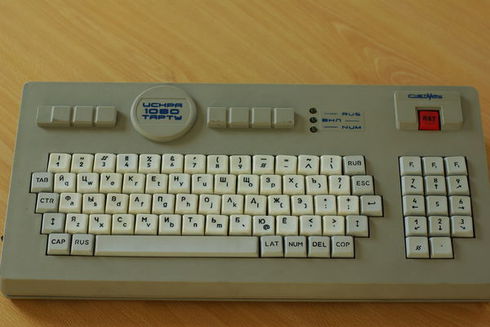
Aleste 520EX is a real Omsk computer developed in 1992-1993. We used a Zilog Z80 processor at 8 MHz. 512 KB of RAM could be expanded up to 2 MB, there was a 3.5 inch drive. The prototype also had a tactile input device for the monitor.
Among the extensions was a light processor, with which Alesta was used as a light control system in a theater.
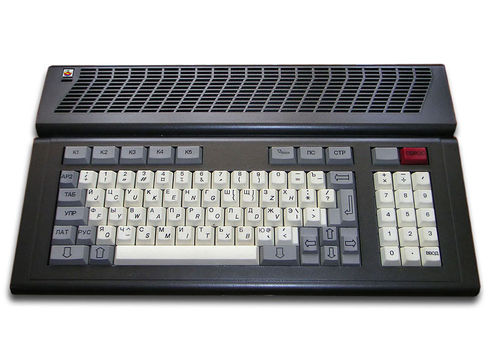
Please write about your experience in the comments or leave links to your publications on the topic.
Interesting:
Museum of Computer History
Advertising laptop computers 1980s and 1990s
The history of personal computers in advertising. Part 1: 1970s
The history of personal computers in advertising. Part 2: 1980s
My first computer was quite powerful - an AMD Athlon 64X processor, 512 megabytes of RAM, a GeForce graphics card. And I never touched computers of the times of the USSR, and I was very surprised when I found out how many there were. In this post, I collected personal computers designed and manufactured in the countries of the socialist bloc in the 1980-1990s.
Did you have computers from the following? Please tell us about your experience!
Please do not be too strict on the design of the post: some of the images I could not find in the best quality.
If you have something to add to the collection, please write about it in the comments or in private messages.



Pravets
The Pravets computer line was produced from 1980 to 1988. This, for example, Pravets 8 - a clone of Apple II.

Also in the Pravets line was an IBM PC clone, made on the basis of Intel processors 8088 and 8086.

Pravets 8D was an analogue of Oric Atmos and was produced from 1985 to 1992.

Micro 80
One of the first Soviet home computers was the Micro-80. To assemble it, it was necessary to use the instructions from the series of articles in the journal "Radio" in 1982-1983. The computer is based on the microprocessor KR580VM80, an analog of i8080 from Intel. In the photo - one of the developers of the Micro-80 computer Sergey Popov.

Dialog Computing Complex
By 1990, 200,000 DVK computers of all models were produced - and there were nine of them. The abbreviation means "Dialogue computing complex." The first model came off the assembly line in 1982.

Agate
Agate was developed in 1981-1983, began to be produced in 1984, and only in 1993 was removed from the assembly line. It was an analogue of Apple II, created specifically for the needs of education. Vicki suggested that Agate was used in education right up to 2001. The computer was manufactured on a 6502 processor from MOS Technology. By the way, two game consoles were bundled with the Agates.
There were several agates. This is the first model - Agat-4.

This is - Agat-7.
 \
\ Agate 9.

Game consoles:

Robotron
Fast forward to the German Democratic Republic. In 1984, they started production of the Robotron 1715 computer. They used an 8-bit U880 processor, a Zilog Z80 clone. There was no sound from the computer, the mouse port was also missing. But there were two built-in 5¼-inch drives.

Specialist 1985
"Specialist" has become a computer that spawned a number of clones. It could be programmed in Assembler, Fort, Pascal, C, BASIC. The computer was developed in 1985.

PC Lik is a computer clone. Specialist. LIK means "PERSONAL COMPUTER". The price, depending on the configuration, ranged from 398 to 543 rubles.

IBM compatible computers
Neuron I9.66 was developed in Kiev, probably in 1985, it is supposedly the first IBM PC / XT-compatible personal computer. They made it on the basis of a processor with a clock frequency of 4.77 MHz. Neurons even sold in 1993.

In Smolensk released "Assistant 128". It was an IBM-compatible computer. It was assembled on the basis of an Intel 8086 clone processor - KR1810VM86. I could not find the year the release began - tell me in the comments, please, if in the know.

1986 ES-1841 16-bit computer. The Unified System computers were mainly IBM PC clones developed in Minsk. The

16-bit Search personal computer was a partial IBM PC / XT clone. In 1988, the first batch was released.

The Spark 1030 computer began to be produced in 1989 in several versions. 256 KB RAM could be expanded up to 1 MB. In the second and third versions of the computer began to use hard drives - 10 megabytes each.

Electronics MS 1502 was another analogue of the IBM PC XT.

Quasar-86 began to be released in 1992. This is a 16-bit home analogue of the IBM PC / XT-compatible PC based on the Intel 8086 clone processor.

BC
BC means Home Computer. This is a family of 16-split computers, compatible by command system with SM computers, PDP-11 and DVK. The first models were produced since 1985. As storage devices was a compact cassette and drive. The model range included BK-0010, BK-0010-01, BK-0011 and BK-0011M.
BK-0010: BK for the horns!

The home computer BK0010-01 in 1989 cost 750 rubles.

Radio 86RK
The 1986 Radio 86RK computer was designed for radio amateur assembly. This is a legendary development, followed by many clones.

Printed circuit board for assembling Radio 86RK.

Among the clones of Radio 86RK: Alpha BK, Mikrosh, Electronics KR-01/02/03/04, Partner 01.01, Krista, Apogee BK-01, Spektr-001. Mikrosh's


computer has been manufactured at the Electromechanical Plant since 1987. They even printed leaflets with information about him . Krista's computer was partially compatible with Radio 86RK. He worked on the processor KR580VM80A. It has been sold since 1986 at a price of 510 rubles.



Included with this computer was a cassette with software: games, a BASIC interpreter, a text editor, training lessons in BASIC, and an English-Russian dictionary. It is worth noting that on Krist it was possible to work with a light pen - it can be clearly seen in the photo.

The Apogee BK-01 computer was developed on the basis of Radio 86RK and has been produced since 1988. They used a compact cassette or floppy disk to store data in it. You could buy it for 440 rubles. He, but with an upgrade to RAM, cost 560 rubles.

In the next model - Apogee BK-01Ts - color support appeared.


Partner 01.01, software compatible Radio 86RK, produced in Ryazan since 1987. It was built on the basis of the KR580VM80A processor, equipped with 64 KB of RAM and 16 KB of ROM. The computer worked in text mode with a resolution of 25 lines of 64 characters and two colors, which were later increased to eight.
Various modules could be connected to the computer, including a color pseudographic module and a drive controller module.
In 1990, this miracle of technology cost from 600 to 750 rubles.

Electronics KR-01/02/03/04 - a series of computers for self-assembly. The abbreviation KR in the name means "radio amateur computer." The designer was made at three factories. Cost - 395 rubles, he was one of the cheapest 86RK clones manufactured industrially.



Spectrum-001 - a clone of Radio 86RK - has been released since the early 1990s. It was fully compatible with the original. The price for 1990 is 475 rubles.

Vector 06c 1987 year
Vector-06Ц was developed in Chisinau in the late 1980s. From the unusual - it had a three-voice synthesizer. The computer in 1987 received a silver medal at the 33rd All-Union Radio Exhibition at VDNH.

Subsequently, several computer modifications were made: Vector-06Ц.02, Vector Start-1200, Krista-2, PK-6128TS, as well as the private development of Vector Turbo +.
Vector start up 1200.

PK8000
The prototype of the PC 8000 series was MSX standard computers.
The first computer in the series was Sura - in 1987. It was designed and manufactured in Penza at the VEM plant. There were several modifications, the ability to connect a drive, printer, kirtridge with startup and hard drives.

Vesta is one of the varieties of PK8000. The computer worked in two text and graphic modes, the processor KR580VM80A 1.78 MHz. The single-bit sound source was a piezo emitter. The set included instructions, a manual for BASIC and application programs, as well as an adapter for a TV receiver, cables for connecting to a cassette recorder and a TV. And, of course, the MK60 cassette with game and application programs in BASIC, including the games “UDAV”, “TENNIS”, “ATAKA”, “BANKIR” and others.
In addition, it was possible to buy a printing device and a sound generator.

ZX Spectrum Clones
Roby's computer is an analogue of the Hobbit, which, in turn, was developed on the ZX Spectrum architecture while maintaining software compatibility with the original. Developed in the USSR in the late 1980s (possibly in 1989).

In the late 1980s, a “Byte” personal computer (modifications of “Byte” and “Byte-01”) was assembled in Brest - an 8-bit home computer, a clone of the ZX Spectrum computer. In Belarus in December 1990, Byte cost 960 Soviet rubles.


The Byte computer manufactured by the Dniester plant. The

Pentagon of 1989 is a ZX Spectrum clone for self-assembly.

"Delta-S" was produced since 1989. This computer is a ZX Spectrum + clone close in logic structure.

Gaming computer "Symbol" - another clone of many beloved ZX Spectrum. It was produced from 1990 to 1995 in Penza.

In Minsk they did at the NGO named after Since 1990, Lenin produced the ZX Spectrum 48K clone - Santaka-002 based on the original Zilog processor (Z840004PSC). Almost the same machine, but with a Secam encoder, was produced in Krasnodar under the name Impulse-M.
As ROM (16 KB), eight KS573RF2 or KR573RF5 microchips of 2 KB each were used.


The "training and game console" Raton 9003 was also a clone of the ZX Spectrum. It was produced in Belarus based on the Z80 processor since 1993.
The kit included a campston joystick and software cassette.

Nathanu, a clone of the ZX Spectrum 48K, could be carried in a briefcase with a computer case, power supply and joystick. They sold it in 1990 at a price of 650 rubles.


Other computers of the 1980s
Meet this - Irisha. Using such an 8-bit computer, they were going to teach children computer science in schools. As a monitor used a TV - black and white or color. The computer is built on the basis of the same processor KR580VM80A, which was used during the assembly of the Micro-80. The clock frequency is 1.777 MHz.
The first Irish were introduced in the Moldavian SSR in 1985. This computer did not go into mass production.

The Lviv PK-01 8-bit educational-household microcomputer on the i8088 processor clone with a frequency of 2.22 MHz was produced from 1986 to 1991. It cost 750 rubles. In total, they released about 80 thousand copies.

The Ocean-240 personal computer was produced by the Institute of Oceanology of the USSR Academy of Sciences since 1986 and was intended for use on expeditions. Equipped with 128 KB RAM. As an external memory source - a household cassette recorder.
Used it together with a deep-sea probe as an information computer complex.

The Paldin 601 was assembled in 1987 in Bulgaria on the basis of the 8-bit CM601 processor, an analog of the Motorola MC6800. Poldin 601 had as many as four video modes 0..3 and a SECAM encoder. The following models added light pen input and a printer port.
Documentation, circuit diagram of the computer and additional boards, photos, articles and other materials about Poldin.

Electronics MS 0511, or UKNTS, was intended for training. It was first introduced in 1987. Also based on it were built process control systems, telegraph concentrators, accounting systems, ticket sales systems and so on.

Corvette PK8010 / PK8020 has been mass-produced since 1988. These computers could be connected to a local network of up to 16 machines.

The UT-88 microcomputer consisted of a power supply unit, a central processor unit, a small memory unit, and an interface unit.

This is also a UT-88, but in a minimal configuration.

Bashkiria-2M was developed in 1989. It had 128 KB of RAM, including 24 KB of video memory - this made it possible to store two pages of 12 KB. Connected to a regular TV or monitor "Electronics MS 3201".

8 bitOrion-128 received the first prize in 1989 at the All-Union Exhibition of Radio Amateurs. The KP580VM80A processor worked at a frequency of 2.5 MHz, RAM 128 KB could be expanded to 256 KB. He worked in graphical mode, connected it to a TV.

Since 1989, a computer Nemiga was produced in Minsk. This 16-bit PC was delivered to educational institutions as part of computer systems. The computer processor was capable of 500,000 register-to-register operations per second, and the video controller generated a 512 × 312 bitmap image, 32 KB of video memory. RAM - 128 KB. There was also a LAN controller.
In the photo - Nemiga PC 588, a desktop computer for the teacher.

Other computers of the 1990s
In 1990, on the basis of the same favorite in the USSR processor KR580VM80A, the Iskra 1080 Tartu computer was produced. He could boast 64 Kb of RAM and 20 Kb of ROM, as well as video modes with a resolution of 384x256 (4 colors) and 768x256 (2 colors).

Aleste 520EX is a real Omsk computer developed in 1992-1993. We used a Zilog Z80 processor at 8 MHz. 512 KB of RAM could be expanded up to 2 MB, there was a 3.5 inch drive. The prototype also had a tactile input device for the monitor.
Among the extensions was a light processor, with which Alesta was used as a light control system in a theater.

Please write about your experience in the comments or leave links to your publications on the topic.
Interesting:
Museum of Computer History
Advertising laptop computers 1980s and 1990s
The history of personal computers in advertising. Part 1: 1970s
The history of personal computers in advertising. Part 2: 1980s
